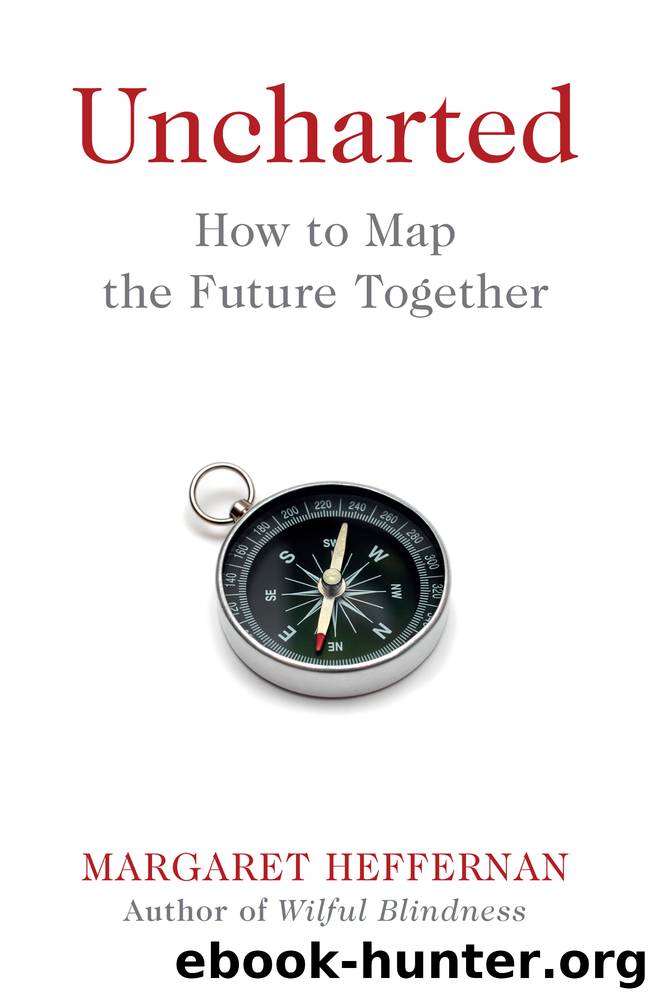Uncharted by Margaret Heffernan

Author:Margaret Heffernan
Language: eng
Format: epub
Publisher: Simon & Schuster UK
Published: 2020-02-20T00:00:00+00:00
SIMMER
The great American documentary filmmaker Frederick Wiseman believes in daydreaming, which he described as paying ‘as much attention to peripheral thoughts at the edge of my mind as to any formally logical approaches to the material. My associations are often as valuable as my attempts at deductive logic.’4 Because explanation is not their game, ambiguity is productive for artists – though it takes courage and stamina to endure it. Unlike expedient work, imagination doesn’t move directly from observation to action but from noticing to gestation. What do particular images, stories, observations mean? What are they saying? Mulling over the accumulated impressions and sensations internalises memories, turns them into source material, available for interpretation. A French contemporary described Ibsen as having two eyes – one reserved for observation, the other for reflection – and both his letters and play drafts reveal him toggling between the petty and the meaningful, the detail and the story. His daughter-in-law recalled how, when she brought him town gossip, ‘One always had to tell him a story twice. First he listened, the second time he always asked very searchingly for details.’5
Of all these accumulated sensations, which ones matter? Artists must decide what to work on. The choice of subject comes with no guarantees but must override all other options. Many say that, while they accumulate a plethora of thoughts and impressions, only a few demand attention – but how and why isn’t immediately obvious. After his encounter near the prison in Afghanistan, Peter Brook spent half a century doing other work; his productions of Shakespeare and Beckett and the revolutionary devising of The Mahabharata established his reputation as the most admired theatre maker in the world. The memory of the prisoner didn’t leave him, he said, it just wouldn’t come to the boil.
Artists use any number of words to describe the process between collection and making: gestation, filtering, percolating, simmering, mulling, distilling, digesting, waiting. No one I’ve ever talked to or worked with can explain how or why clarity emerges; they simply trust that it will. In practical terms, this means that artists wait for meaning to emerge. ‘Be patient towards all that is unresolved in your heart,’ Rilke wrote, advising a young poet, ‘and try to love the questions themselves like locked rooms, like books written in a foreign tongue . . . Live the questions for now. Perhaps then you will gradually, without noticing it, live your way into the answer . . . this is what you must work on however you can and not waste too much time and too much energy on clarifying your attitude to other people.’6
There’s an echo here of the CERN scientists who glean over time where physics might be going next. But where they collect and review data, artists use themselves and their lives as the colliders – the place where collisions occur, where signals can be traced and interpreted. What propels the work are questions that reverberate incessantly: what do these images, words, signals mean to
Download
This site does not store any files on its server. We only index and link to content provided by other sites. Please contact the content providers to delete copyright contents if any and email us, we'll remove relevant links or contents immediately.
International Integration of the Brazilian Economy by Elias C. Grivoyannis(74996)
The Radium Girls by Kate Moore(11621)
Turbulence by E. J. Noyes(7702)
Nudge - Improving Decisions about Health, Wealth, and Happiness by Thaler Sunstein(7244)
The Black Swan by Nassim Nicholas Taleb(6770)
Rich Dad Poor Dad by Robert T. Kiyosaki(6179)
Pioneering Portfolio Management by David F. Swensen(6081)
Man-made Catastrophes and Risk Information Concealment by Dmitry Chernov & Didier Sornette(5650)
Zero to One by Peter Thiel(5494)
Secrecy World by Jake Bernstein(4389)
Millionaire: The Philanderer, Gambler, and Duelist Who Invented Modern Finance by Janet Gleeson(4099)
The Age of Surveillance Capitalism by Shoshana Zuboff(3989)
Skin in the Game by Nassim Nicholas Taleb(3968)
The Money Culture by Michael Lewis(3849)
Bullshit Jobs by David Graeber(3833)
Skin in the Game: Hidden Asymmetries in Daily Life by Nassim Nicholas Taleb(3724)
The Dhandho Investor by Mohnish Pabrai(3561)
The Wisdom of Finance by Mihir Desai(3526)
Blockchain Basics by Daniel Drescher(3330)
